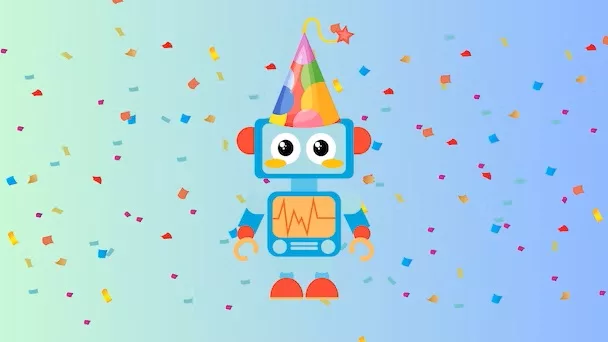Rapid advances in AI models like ChatGPT and DALL-E 2 unlock new creative possibilities for media companies – but also pose risks around misinformation and job disruption that require diligent management. We analyze the latest beneficial AI applications alongside perspectives on responsible adoption.
ChatGPT and successor models from Anthropic, Google, Microsoft and others demonstrate astonishing progress in generative language abilities. Meanwhile, visual AI models like DALL-E 2 exhibit new creative potential for design and ideation.
As a media professional in the focused on global entertainment and technology trends, I have hands-on experience with these tools – from Claude writing assistant to Bing Chat conversations to DALL-E image generation for print-on-demand products.
When applied judiciously alongside human guidance, AI promises to augment ideation, personalization and efficiency for content creation and consumer interactions. However, we must be vigilant of risks around quality control and workforce impacts in exploring these emerging capabilities.
Creative Writing Augmentation with Responsible Oversight
At their current stage, ChatGPT and alternatives act as useful writing assistants – helping organize information, suggesting content ideas and passages, and providing feedback. However, directly publishing AI-generated text remains risky.
As Anthropic CEO Dario Amodei cautions, while Claude can create helpful drafts, “a human still needs to edit, fact-check and revise”. Without ongoing supervision, output could contain false information or biased perspectives contrary to publisher standards.
I utilize Claude daily to jumpstart articles, then carefully refine and fact-check content before publication. This collaboration accelerates ideation and draft creation drastically compared to writing from scratch.
AI writing tools shine in brainstorming concepts, assessing tone consistency and expanding outlines. But human creativity, knowledge and ethics remain integral to finishing high-quality articles acceptable for public distribution.
Ongoing training in journalistic practices and company voice will further improve utility in mitigating misinformation risks.
Visual Concept Generation Building Toward Creative Independence
On the visual design front, AI image generators like DALL-E 2 exhibit aptitude for translating described scenes, objects and styles into novel graphic concepts.
I’ve successfully leveraged DALL-E 2 to create products for my print-on-demand store by describing the desired scene and text elements. It renders compositions, lighting and colors well based on prompts.
However, fine details like embedded text legibility remain challenging. I resort to overlaying key phrases separately after generating product mockups.
As training data and computing scale continues expanding exponentially, future iterations aim to match human visual acuity. Anthropic expects Constitutional AI technology to eventually “create novels, screenplays, software and more independently with appropriate safety”.
But for now, DALL-E 2 and successors still operate best collaboratively for early-phase ideation before finalization by human designers. Continued oversight is essential as technical capabilities don’t yet match creative judgment.
Risks Loom Amid Promise for Workforce Disruption
While AI collaboration shows immense promise boosting media productivity, we must remain vigilant about workforce impacts as adoption accelerates.
Generative writing tools could decimate entry-level writing roles if management views AI as a wholesale replacement rather than performance multiplier. Mid-career creatives also risk skills stagnation if over-reliant on AI tools without continuing education.
However, increased ideation velocity and personalization capabilities conversely present opportunities to expand content production for differentiated audience experiences – potentially increasing jobs requiring human creativity, empathy and qualitative assessment.
Foremost, using AI ethically requires reconsidering productivity metrics focused on volume. As machine capabilities eclipse human output ceilings, the emphasis must shift to quality, accuracy and wisdom.
Protection must also expand for vulnerable freelance creators as AI diffusion continues. Policy innovations around compensation and IP warrant consideration to ensure economic inclusion.
Overall there remain more questions than answers regarding responsible adoption. But facing uncertainties directly, planning proactively and prioritizing people offer positive paths forward.
Perspectives on AI Integration in Baltic Media
As with global platforms, Baltic media companies stand to gain enormously by judiciously integrating AI into creation workflows. Beyond efficiency gains, local players can craft uniquely tailored Baltic experiences layered atop generative foundations.
I expect addressable TV capabilities to significantly lag the real-time personalization possible in streaming environments. As audiences continue migrating to on-demand video, seamless AI-assisted responsiveness will disrupt TV advertising comparable to programmatic advances digitally.
Better aligning messaging with viewer mindsets and contexts will unlock major value – from improvisational conversations to personalized product recommendations within shows.
5G proliferation over the next decade may further expand possibilities for dynamic in-person interactions using augmented reality. Latvia’s early leadership here positions Baltic brands to pioneer ambient applications through urban IoT infrastructure.
Conclusion
In summary, AI creativity augments immense potential for value creation and engagement in media while requiring vigilant management of risks. By embracing human+machine collaboration responsibly, we can reap exponential gains in innovation and understanding.
But bias, misinformation and workforce impacts demand ongoing focus to ensure broad prosperity. With ethical foundations and social supports in place to smooth economic transitions, Baltic nations can lead developing an inclusive AI-powered future.
